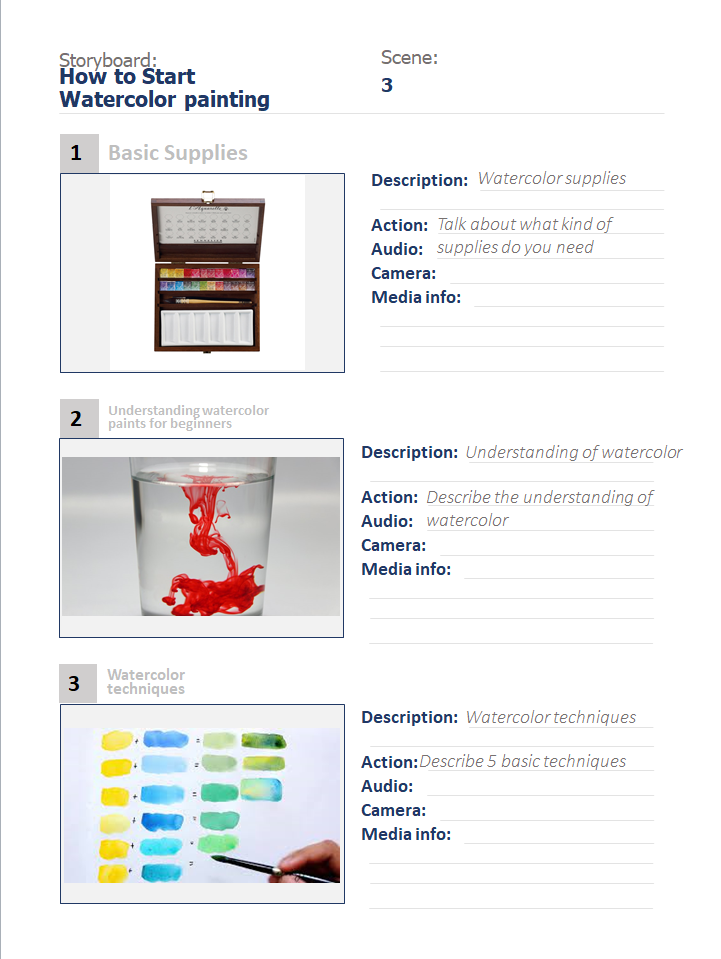Since I returned the film camera to my professor after completing my photography class assignment, I was unable to create a video related to last week’s storyboard. Therefore, I created a new storyboard related to watercolor painting and used it to create this video. This video covers the knowledge that needs to be understood before learning watercolor painting.

When beginners start painting, they often wonder if they need a variety of painting materials. In fact, for beginners, only a few brushes, paints, and basic watercolor paper are sufficient. Therefore, I think this part should be placed at the beginning. Many people may have no prior knowledge of watercolor, so for the second part, I choose to talk about “Understanding watercolor paints for beginners”, which allows students to know that watercolor painting is essentially the mixing of water and paint in different proportions to create their own artwork. Once students have mastered the first two parts, they can begin to prepare for painting. Therefore, for the third part, I choose to discuss some of the most basic watercolor techniques. These are the most fundamental and important techniques in watercolor, which are needed by both beginners and professional artists. It is hoped that students who have watched this video can learn the fundamental knowledge of watercolor painting and be ready to start their subsequent learning.
While creating the content for this video, I found the multimedia learning principles I learned in this course are very helpful. I used five of Mayer’s principles: The signaling principle, the Multimedia Principle, the Personalization Principle, the Voice Principle, and the Image Principle.
The signaling principle is that people learn more deeply from a multimedia message when cues are added that highlight the organization of the essential material. In the video content, I used arrows and different colors to highlight important information. The multimedia principle means people learn better from words and pictures than from words alone. In my video, I used various images to illustrate key points. Those images can help to clarify meanings. The personalization principle means people learn better from multimedia presentations when words are in conversational style rather than formal style, so I choose to use a conversational style of expression in my video. After considering the voice principle, which means people learn better when narration is spoken in a human voice rather than in a machine voice, I choose to record my own voice instead of using a machine voice. For the last principle, the image principle, people do not necessarily learn better when the speaker’s image is added to the screen. Therefore, I choose to only record my voice in my video rather than show myself on the screen.
Reference
Mayer, R., & Fiorella, L. (2014). Principles for Reducing Extraneous Processing in Multimedia Learning: Coherence, Signaling, Redundancy, Spatial Contiguity, and Temporal Contiguity Principles. In R. Mayer (Ed.), The Cambridge Handbook of Multimedia Learning (Cambridge Handbooks in Psychology, pp. 279-315). Cambridge: Cambridge University Press. doi:10.1017/CBO9781139547369.015
Principles of Multimedia Learning – Center for Teaching and Learning | Wiley Education Services. (2016, July 19). Center for Teaching and Learning | Wiley Education Services. https://ctl.wiley.com/principles-of-multimedia-learning/
Leave a Reply
You must be logged in to post a comment.